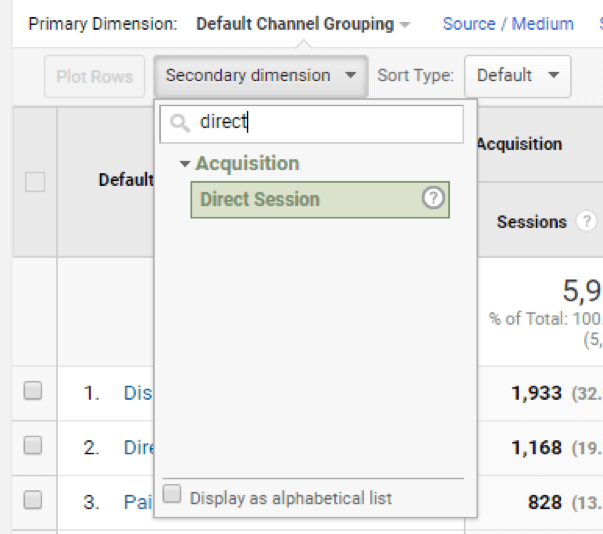Just How to Use Secondary Dimension in Google Analytics for Deeper Insights
Just How to Use Secondary Dimension in Google Analytics for Deeper Insights
Blog Article
Enhance Your Information Analysis Using Secondary Measurement in Google Analytics
Discovering the capabilities of second dimensions in Google Analytics opens up a world of opportunities for refining data analysis. The ability to explore details further beyond the surface degree provides a nuanced sight that can shape strategic choices. By layering extra dimensions onto primary information collections, an even more complex story arises, dropping light on customer communications and efficiency indications. This dynamic method to information exam holds the crucial to unlocking concealed patterns and fads that can transform exactly how services interpret their digital footprint.
Recognizing Additional Dimensions
In the realm of information analysis, a crucial element to grasp is the principle of second dimensions and their importance in removing much deeper understandings from Google Analytics records. Secondary dimensions in Google Analytics describe extra parameters that can be included in the primary measurement, enabling a much more detailed analysis of data. By integrating additional dimensions, analysts can section and filter information to reveal patterns, trends, and connections that could not appear when considering the data overall. These additional measurements can offer context and a much more extensive understanding of customer habits, website traffic sources, and various other crucial metrics tracked by Google Analytics.

Benefits of Using Additional Measurements
When evaluating data in Google Analytics, the utilization of secondary dimensions supplies important insights into user actions and efficiency metrics. By including an additional measurement to your main data, you can dig much deeper right into the attributes of your web site site visitors and their interactions. Among the key benefits of utilizing second measurements is the capability to section and compare information better. This division allows you to comprehend how different variables, such as demographics or website traffic sources, impact customer behavior and conversions (Secondary Dimension in Google Analytics).
In addition, second measurements enhance the context of your primary data, giving an extra thorough view of customer involvement and performance metrics. On the whole, the usage of additional measurements in Google Analytics can substantially improve the deepness and top quality of your data evaluation, leading to even more informed decision-making and boosted outcomes.
How to Add Additional Dimensions
By incorporating additional measurements in Google Analytics, individuals can obtain deeper insights into their data analysis process, enabling for more comprehensive assessment of individual actions and efficiency metrics. Adding secondary dimensions is a simple process that can substantially improve the deepness of evaluation. Once in the record, situate the "Secondary dimension" tab over the information table.
Studying Information With Second Dimensions
Utilizing additional measurements in data analysis offers a much more thorough understanding of customer habits and performance metrics. By adding a secondary measurement to your main data set in Google Analytics, you can delve much deeper right into the characteristics of your website visitors and their communications. As an example, incorporating the main dimension of 'source/medium' with the secondary measurement of 'touchdown page' can expose which specific pages are attracting web traffic from different sources, aiding you optimize these web pages for far better involvement.

Essentially, evaluating information with additional dimensions encourages you to acquire valuable understandings into customer habits, determine trends, and make educated choices to enhance the efficiency of your electronic homes.
Best Practices for Second Measurements
In data analysis, incorporating additional dimensions properly can dramatically improve the deepness of insights stemmed from metrics and customer habits patterns. When utilizing second dimensions in Google Analytics or any kind of other logical device, it is crucial to stick to finest practices to make certain the precision and relevance of the information evaluation.
One key finest technique is to carefully choose second dimensions that match the main measurement being assessed. Choosing additional measurements that provide extra context or more segmentation can use a more thorough understanding of the data. It is additionally essential to stay clear of overcomplicating the evaluation by including way too many additional measurements, which may bring about confusion or dilution of understandings.
Moreover, it is advisable to trying out different combinations of primary and secondary measurements to uncover brand-new correlations and patterns. Consistently improving the option and reviewing of additional dimensions based upon the specific objectives of the analysis can lead to even more actionable understandings. By following these best practices, information analysts can leverage additional measurements effectively to boost the general information analysis process and decision-making capabilities.

Verdict
In verdict, integrating secondary dimensions in Google Analytics is crucial for a thorough information evaluation technique. By leveraging secondary dimensions alongside primary ones, experts and marketing experts can reveal useful understandings and relationships that can educate decision-making and enhance electronic marketing methods. Understanding exactly how to efficiently utilize second measurements and following finest practices will certainly permit experts to extract meaningful information and improve useful content their overall performance metrics.
Secondary dimensions in Google Analytics refer to extra criteria that can be added to the primary measurement, allowing for a much more in-depth analysis of information. By integrating additional dimensions, analysts can section and filter data to reveal patterns, patterns, and connections that might not be obvious when looking at the information as a whole. Incorporating the key dimension of 'source/medium' with the secondary dimension of 'landing web page' can expose which specific web pages are drawing in traffic from various sources, aiding you maximize these web pages for far better interaction.
One trick finest practice is to carefully pick additional dimensions that complement the primary dimension being analyzed. By adhering to these best techniques, data experts can leverage secondary measurements properly to enhance the advice general data analysis process and decision-making capabilities.
Report this page